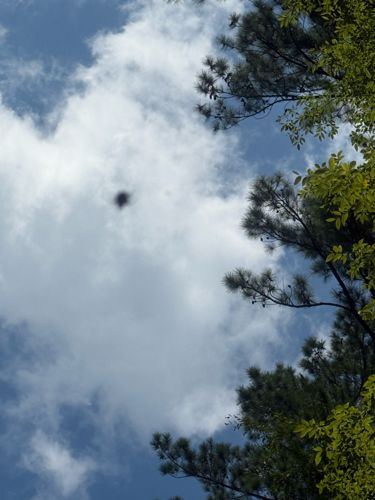Hornet (likely European Hornet or related large wasp species)
Scientific Name: Vespa (European Hornet: Vespa crabro, or similar large Vespinae species)
Order & Family: Order: Hymenoptera, Family: Vespidae
Size: Typically 18-35 mm (0.7-1.4 inches) in length, with queens being larger than workers and males. Given the distant and blurry nature of the image, the size appears to be consistent with a larger flying insect, such as a hornet.

Natural Habitat
Hornets can be found in various habitats where trees are present, including woodlands, forests, parks, and suburban areas. They require suitable locations for nest building, often in trees, shrubs, or sometimes structural cavities.
Diet & Feeding
Hornets are predators, primarily feeding on other insects such as flies, bees, grasshoppers, and caterpillars to provide protein for their developing larvae. Adult hornets also feed on nectar, tree sap, and decaying fruit for carbohydrates.
Behavior Patterns
While it's difficult to ascertain specific behavior patterns from a blurry distant image, most species of wasps and bees are active during the day, especially in warm weather. Hornets are social insects, living in colonies that can number in the thousands. They build large, globe-shaped nests made from chewed wood fibers, often in trees, hollow logs, or sometimes in attics and wall cavities. They are territorial and will aggressively defend their nest if threatened. Foraging workers are often seen flying individually.
Risks & Benefits
Potential risks include painful stings, especially for individuals allergic to their venom. Hornets can be aggressive if their nest is disturbed or if they feel threatened. Multiple stings can be dangerous. Benefits include their role as predators, helping to control populations of other insects that may be considered pests.
Identified on: 8/16/2025